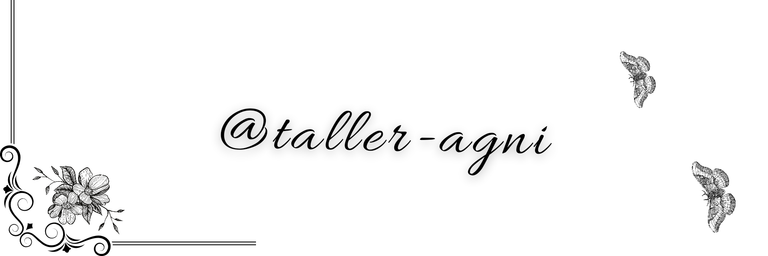
taller-agni PRESENTS
From the process of structural construction of the skull: Anatomy for artists
In this work we want to place the example to follow when you want to make a sketch of a face, either to portray someone or for knowledge of medical studies in the part of anatomy, or for love of art and doubts about our body ...
Well, we will see on issues of mythologies and representations or illustrations of the same, trying to do for yours truly ...
Whether for domestic use or for recreations ...
This is a practical example that you can follow to make as mentioned a study of the parts of the body.
Del proceso de construcción estructural del cráneo: Anatomía para artistas
En este trabajo se quiere colocar el ejemplo a seguir cuando se quiera hacer un boceto de un rostro, sea para retratar a alguien o por conocimientos de estudiandato de medicina en la parte de anatomía, o pues bien por amor al arte y dudas sobre nuestro organismo …
Pues, ya iremos viendo sobre temas de mitologías y representaciones o ilustraciones de las mismas, tratándose de hacer por su servidor…
Sean para uso doméstico o para recreaciones …
Este es un ejemplo práctico que puede seguir para hacer como se había mencionado un estudio de las partes del cuerpo.
From the process of structural construction of the skull: Anatomy for artists
In this work we want to place the example to follow when you want to make a sketch of a face, either to portray someone or for knowledge of medical studies in the part of anatomy, or for love of art and doubts about our body ...
Well, we will see on issues of mythologies and representations or illustrations of the same, trying to do for yours truly ...
Whether for domestic use or for recreations ...
This is a practical example that you can follow to make as mentioned a study of the parts of the body.
Del proceso de construcción estructural del cráneo: Anatomía para artistas
En este trabajo se quiere colocar el ejemplo a seguir cuando se quiera hacer un boceto de un rostro, sea para retratar a alguien o por conocimientos de estudiandato de medicina en la parte de anatomía, o pues bien por amor al arte y dudas sobre nuestro organismo …
Pues, ya iremos viendo sobre temas de mitologías y representaciones o ilustraciones de las mismas, tratándose de hacer por su servidor…
Sean para uso doméstico o para recreaciones …Este es un ejemplo práctico que puede seguir para hacer como se había mencionado un estudio de las partes del cuerpo.
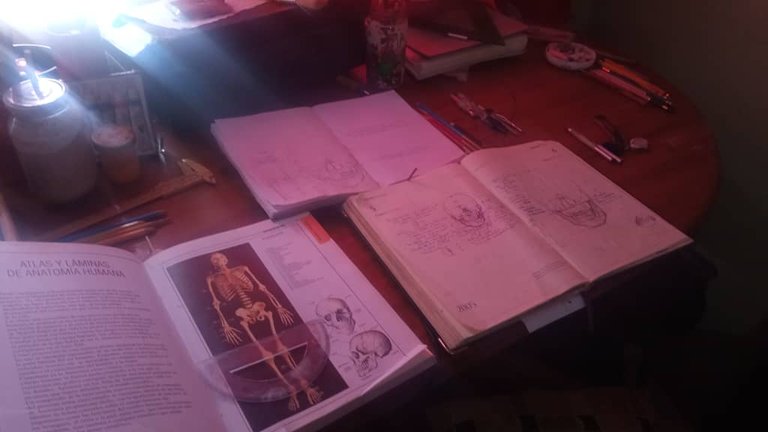
PROCESO BASANDOME EN ATLAS GENERAL Y CURSO
Lo primero es hacer una linea vertical de forma tal que dé con la altura total del rostro a retratar, de equis dimensiones. Está línea se dividirá en 6 secciones iguales, tomando como hincapié la mitad de la misma
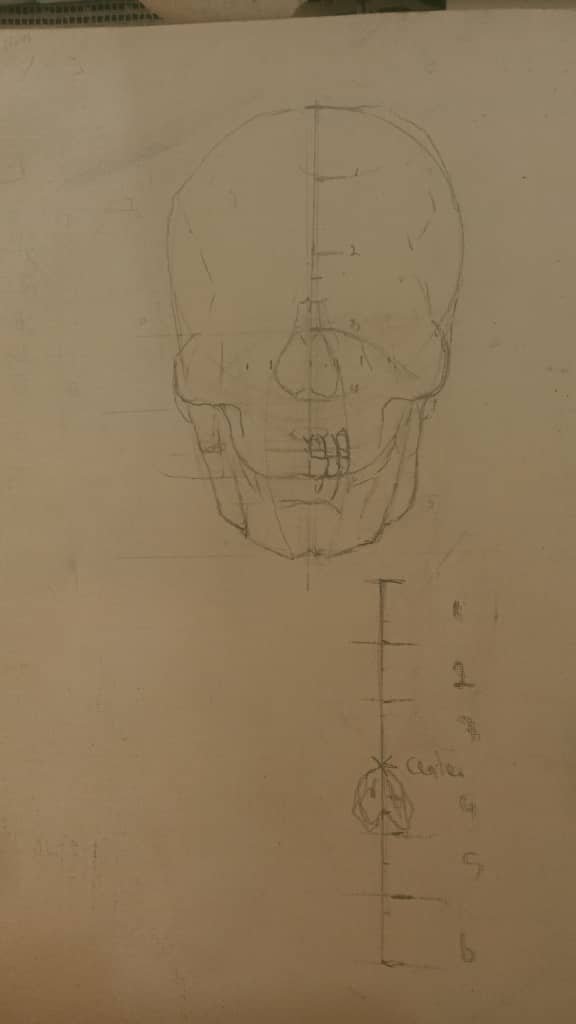
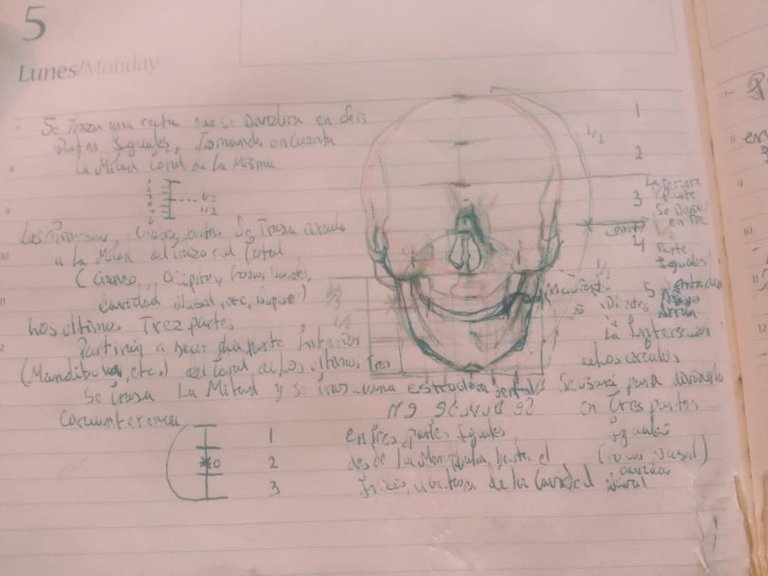
ANOTACIONES PROPIAS
Se trazará un círculo tomando la tercera linea como punto de apoyo o eje de circunferencia como eje A(base), y la primera linea como eje B. Y se traza el círculo, de forma tal que abarcará los primero 4 segmentos dentro de la línea Está círculo grande, será representado para el cráneo, cuenca de los ojos como orificios nasales…
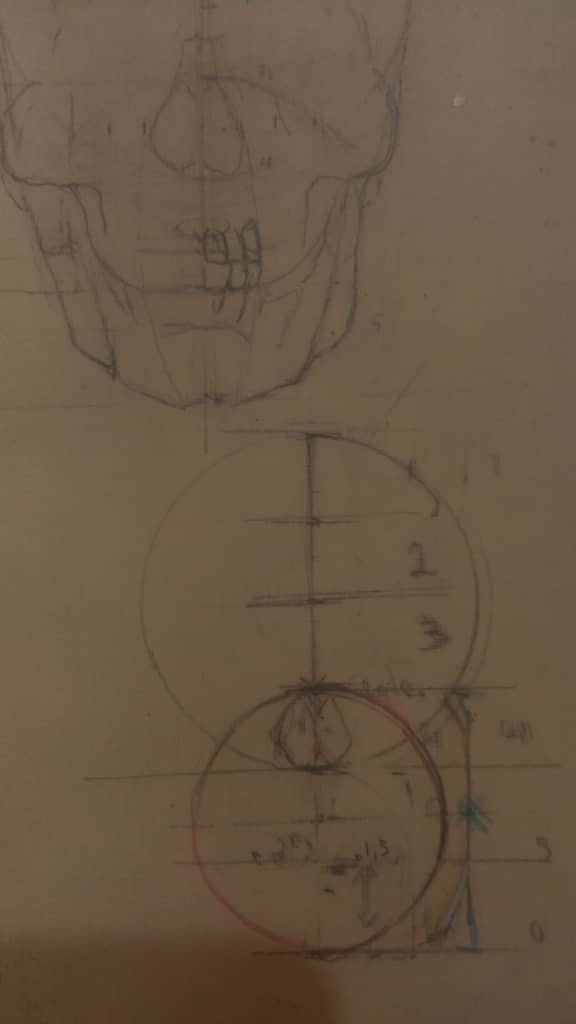
Luego tomando el último segmento(6) como base, se ubicará el centro de aquí hasta la línea “4” Y de hará un círculo menor, esto a fin de ubicar la zona donde estará el total de la cavidad nasal, mandíbula y fila de dientes superiores e inferiores
Entre el cruce de ambos círculos, el mayor al menor, se trazará un Linea guía, y se dividirá desde aquí como base hasta el eje central de la recta, y de dividirá en tercios. Tres partes iguales a fin de ayudarse a encontrar el punto máximo de las fosas nasales y el comienzo de la “Apófisis Mastoidea” ubicada en la sección temporal del cráneo, justo detrás de las orejas, esto como una simple guia .
Again, one-third is used to locate the angle of the lower jaw. One-third is also the level for the line between the teeth.
The characteristic outline of the jaws extends through three key points
La cuenca del ojo está alineada con el arco de la mejilla; La profundidad máxima del cráneo está a nivel de la raíz de la nariz; El suelo de la cuenca del ojo está a la altura del arco de la mejilla; El canal auditivo está justo encima de la base del cráneo, que está al nivel de la base de la nariz; La cuenca del ojo está en el medio; La altura de la frente es igual a la de la nariz y las mandíbulas Como puede observar, se utilizan medidas de un tercio para ubicar ciertos puntos.
Una vez más, se utiliza un tercio para ubicar el ángulo de la mandíbula inferior. Un tercio también es el nivel para la línea entre los dientes.
El contorno característico de las mandíbulas se extiende a través de tres puntos clave
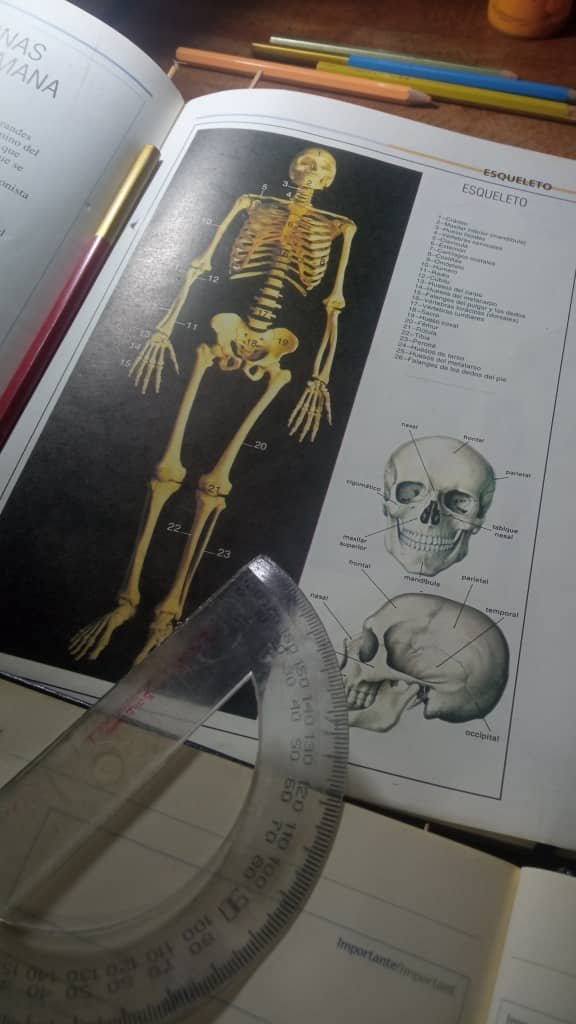
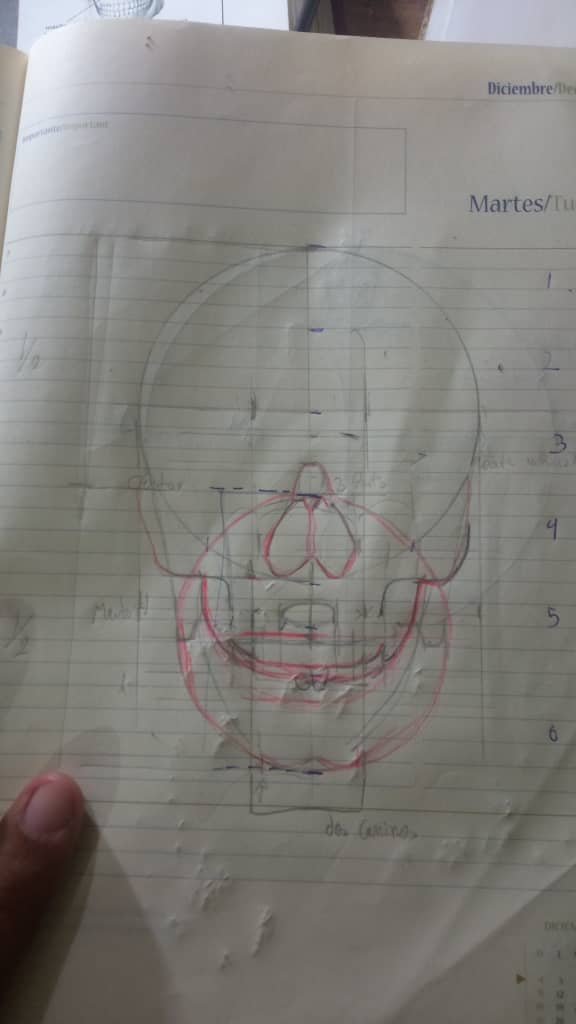
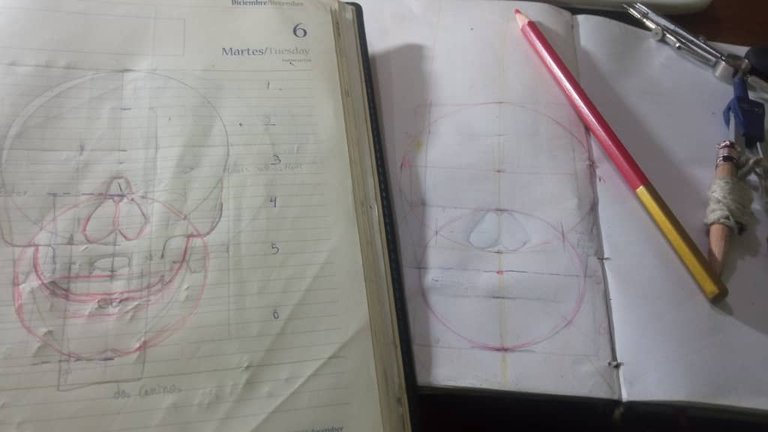
IZQUIERDA, ANOTACION. DERECHA, TRABAJO FINAL.
Again, one-third is used to locate the angle of the lower jaw. One-third is also the level for the line between the teeth.
The characteristic outline of the jaws extends through three key points
La cuenca del ojo está alineada con el arco de la mejilla; La profundidad máxima del cráneo está a nivel de la raíz de la nariz; El suelo de la cuenca del ojo está a la altura del arco de la mejilla; El canal auditivo está justo encima de la base del cráneo, que está al nivel de la base de la nariz; La cuenca del ojo está en el medio; La altura de la frente es igual a la de la nariz y las mandíbulas Como puede observar, se utilizan medidas de un tercio para ubicar ciertos puntos.
Una vez más, se utiliza un tercio para ubicar el ángulo de la mandíbula inferior. Un tercio también es el nivel para la línea entre los dientes.
El contorno característico de las mandíbulas se extiende a través de tres puntos clave
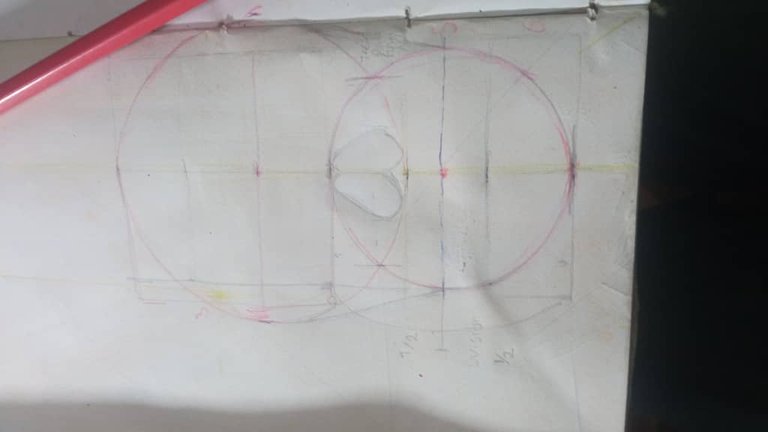
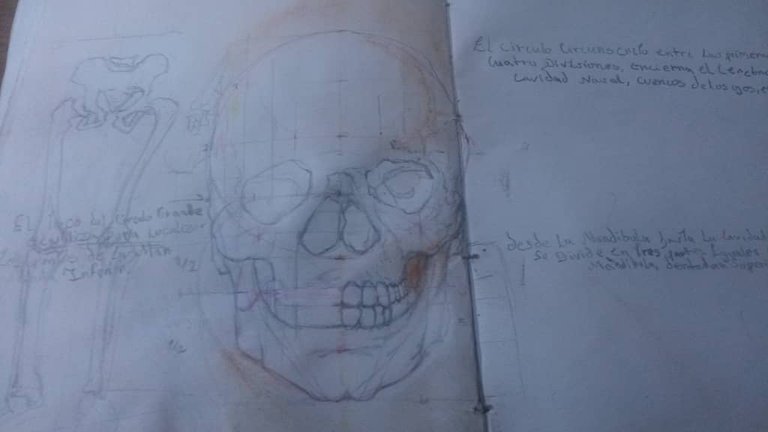
We continue to finalize the more intuitive details with these guidelines to build the jaw, nostrils and teeth ...
To make the ocular cavities it is necessary to make a vertical straight line from the base of the last minor circle to the major circle and divide it in three equal parts taking as reference half of the circle or half of the skull, as a note, the center or circumference axis of the major circle represents the forehead, and half of everything that is going to be represented in this would be the beginning of the nasal cavity.
(Upper part for reference)
Es necesario en este proceso tener una referencia de lo que se está haciendo, nosotros consultamos una enciclopedia general tipo atlas, que contiene diversos temas en general, entre ellos, biología, zoología, arqueología, y anatomía.
Prosiguiendo ya se termina de finalizar los detalles más intuitivos con estas líneas guías para construir la mandíbula, fosa nasal y dientes …
Para hacer las cavidades oculares es necesario hacer una linea recta vertical desde la base desde el último círculo menor, hasta el mayor y dividir en tres partes iguales tomando como referencia la mitad del circulo o la mitad del cráneo, como nota, el centro o eje de circunferencia del círculo mayor representa la frente, y la mitad de todo lo que va a representarse en este vendría a ser el inicio de la cavidad nasal.
(Parte superior como referencia)
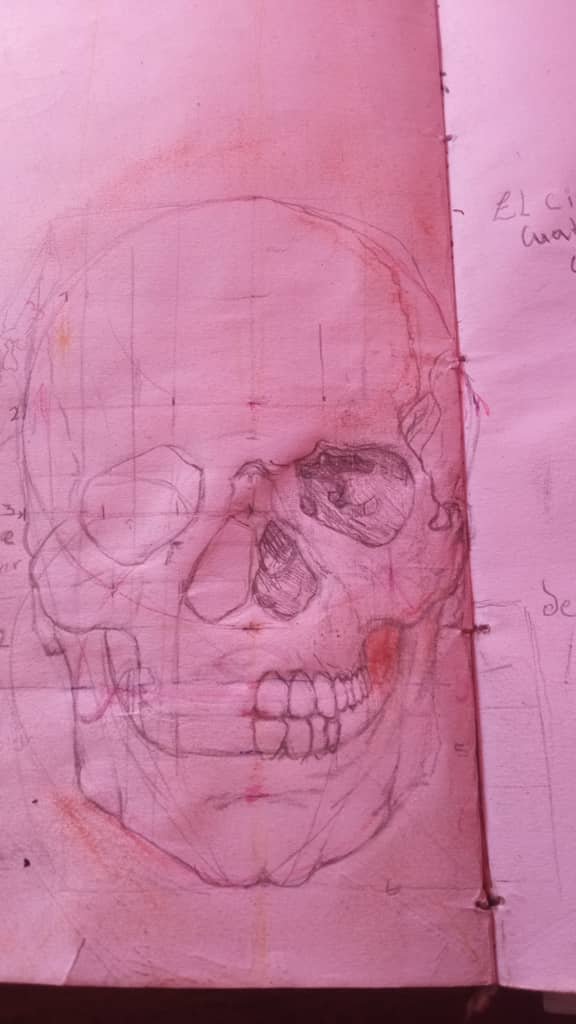


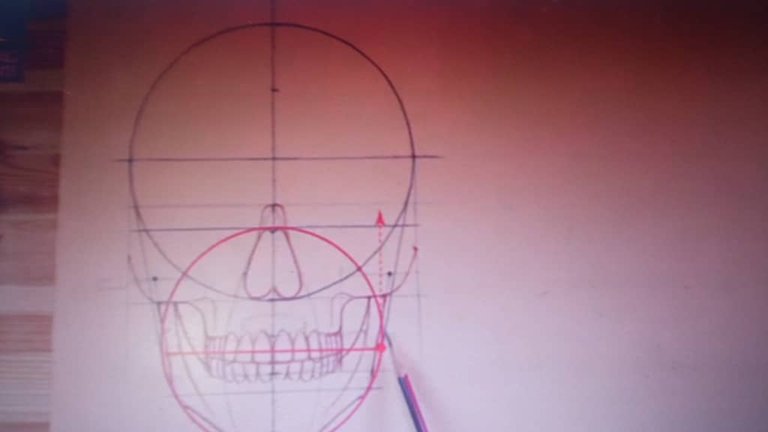
imagen referencial de curs gratuito en linea
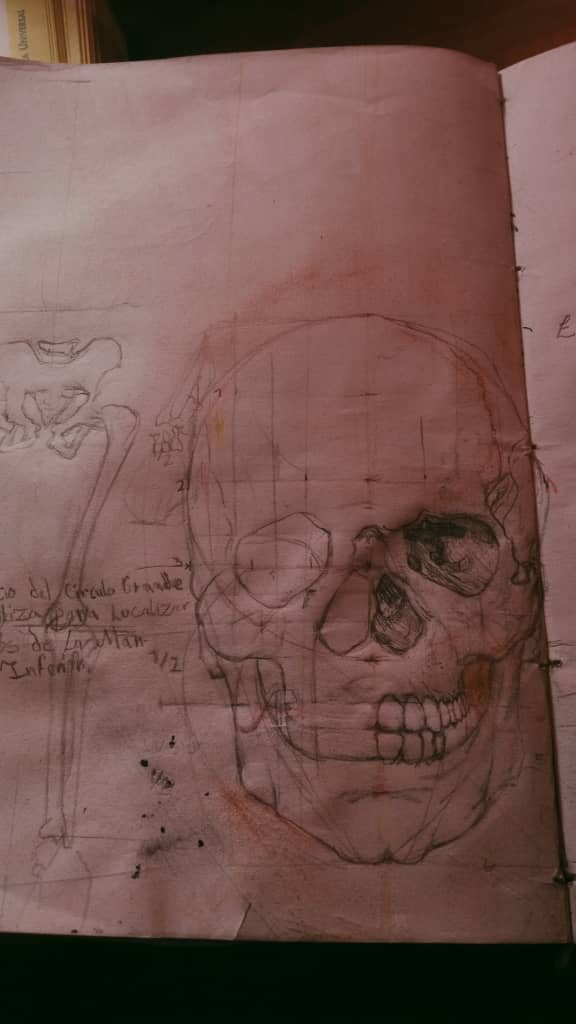
detalles finales
Todas las fotos fueron tomadas con mi celular
ediciones usando Canva
Uso traductor Deepl
